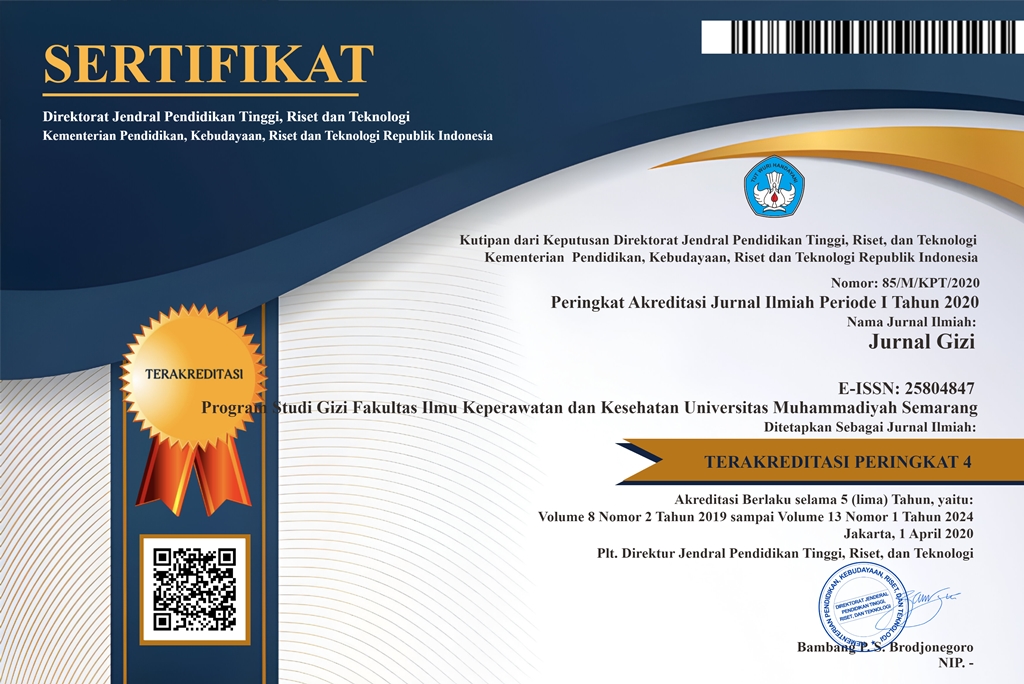Sifat Organoleptik dan Kadar Serat Pangan Mie Basah dengan Penambahan Tepung Okra Hijau (Abelmuschus esculentum L.)
(1)
(2)
(3)
(*) Corresponding Author
Abstract
The content of dietary fiber in wet noodle is lower than the dietary fiber requirement, so we need to add the local food which is high in dietary fiber content, that is green okra (Abelmuschus esculentum L). This study was to determine the effect of green okra flour mixing in wet noodle on organoleptic characteristics and dietary fiber content. This was an experimental study with complete random design. The independent variable was substitution of green
okra flour on wet noodle, while the dependent variables were organoleptic characteristics and dietary fiber content. There were four variations of wet noodles i.e. 0%, 10%, 15%, 20%. Data were analyzed using Kruskal-wallis, Mann Whitney and Anova. The result showed wet noodle 10% was whitish green, typical flavour of wet noodle, and chewy. The highest level of dietary fiber content was in wet noodle 20% as many as 9,92 grams. In conclusion, there were any significant differences in organoleptic test result based on aroma and taste, but no difference based on color and texture. There were significant differences in dietary fiber content from the four experiment variations. The higher percentage of green okra flour makes the higher content of dietary fiber content in wet noodles.
Keywords : Wet noodle; Green okra (Abelmuschus esculentum L.) flour; organoleptic characteristic; Dietary fiber content.
Full Text:
PDFArticle Metrics
Abstract view : 2812 timesPDF - 654 times
DOI: https://doi.org/10.26714/jg.9.1.2020.131-141
Refbacks
- There are currently no refbacks.
Diterbitkan oleh: Program Studi Gizi (D3 dan S1)
Fakultas Ilmu Keperawatan dan Kesehatan
Universitas Muhammadiyah Semarang
Sekretariat: Jl. Kedungmundu Raya No. 18 Semarang
Contact Person : Hapsari Sulistya Kusuma, S.Gz, M.Si (+62 85 6 41 536 553)

This work is licensed under a Creative Commons Attribution 4.0 International License.









.png)
.png)